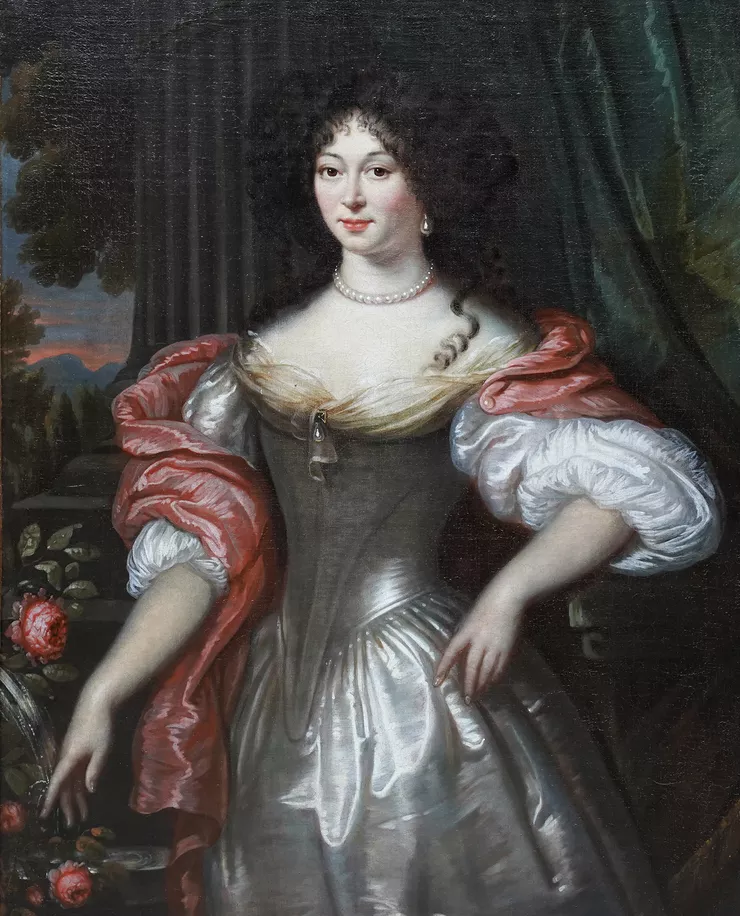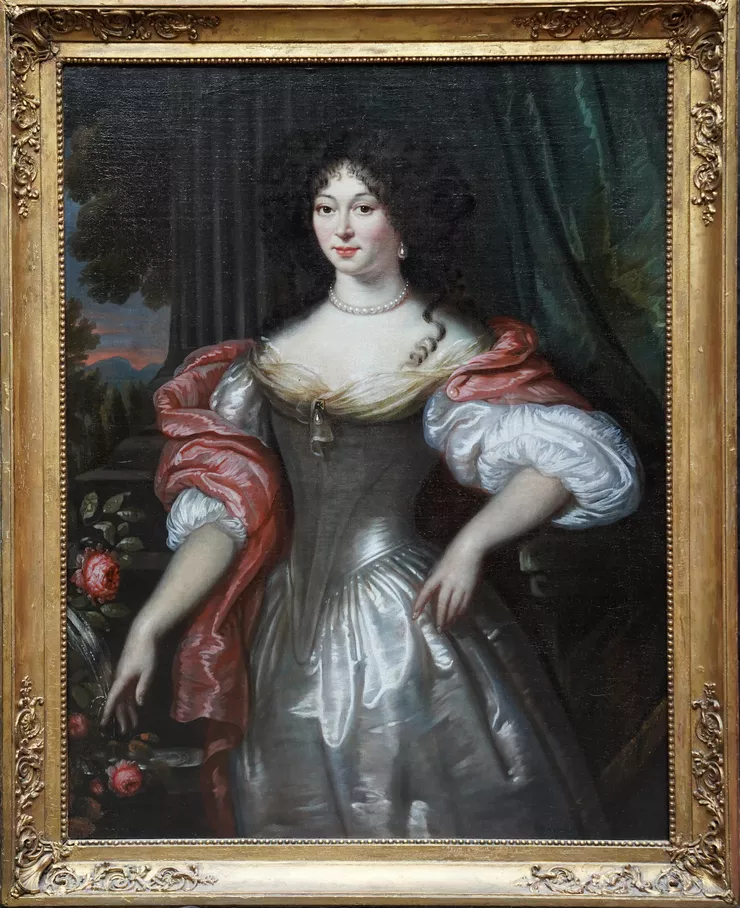Willem Wissing (1656-1687)
| Artist Name | Willem Wissing (1656-1687) |
|---|---|
| Title | Portrait of a Lady in Silver Dress |
| Description | This lovely Dutch Old Master portrait oil painting is attributed to circle of Willem Wissing. Wissing settled in England and emerged as Peter Lely's most important pupil after his death. Painted circa 1680, the composition is a standing three quarter length portrait of a beautiful lady, her dark curly hair cascading down her back and shoulders. She is wearing a silver satin dress with a pink velvet shawl about her. Behind her on one side is a rich green drape, and on the other side a classical column and landscape beyond. Her right hand is out stretched towards some red roses whilst her other hand is on her hip. Pearls are at her neck and ears. Her stature and dress tell the viewer that she is a woman of wealth and confidence as well as beauty. The roses signify her fidelity and their colour is matched with her shawl and pink lips. Sadly the sitter is currently unknown. Wissing himself died in 1687, possibly poisoned by a jealous rival. His studio workshop was continued by van der Vaart. This is a charming Dutch Old Master portrait with superb brushwork and colouring. Indistinctly dated bottom right. |
| Provenance | Francis Downing label verso. |
| Medium | Oil on Canvas |
| Size | 34 x 43 inches |
| Frame | Housed in an ornate gilt frame, 50 inches by 41 inches and in good condition. |
| Condition | Good condition. |
| Biography | Willem Wissing, known in England as William Wissing (1656-1687), was a Dutch portrait artist who worked in England. He was born in either Amsterdam or The Hague, and studied at The Hague under Willem Doudijns (1630–97) and Arnoldus van Ravestyn (1615–90). In 1676, he moved to England, where he studied with and assisted Peter Lely. After Lely's death in 1680, Wissing emerged as his most important pupil. Godfrey Kneller was the only contemporary portrait artist in England to rival Wissing. Wissing’s royal sitters include Charles II of England, Catherine of Braganza, George of Denmark and James Scott, 1st Duke of Monmouth. In 1685, James II of England sent Wissing to the Netherlands to paint portraits of his Dutch son-in-law and daughter, the future William III of England and the future Mary II of England. The portraits were often repeated; versions are on display in the Great Hall of the Wren building at the College of William and Mary in Williamsburg, Virginia. Wissing died in 1687 at the peak of his fame as a portrait painter, at Burghley House, the home of John Cecil, 5th Earl of Exeter near Stamford in Lincolnshire. Some suspected he was poisoned out of jealousy of his success. According to Arnold Houbraken his epitaph was Immodicis brevis est aetas, meaning Brief is the life of the outstanding. He was buried in St Martin's Church, Stamford, Lincolnshire. Fellow Dutch immigrant Jan van der Vaart worked in his workshop and added the draperies and landscapes in the portraits painted by Wissing. After Wissing's death in 1687, van der Vaart continued Wissing's workshop. Many of Wissing's portraits of prominent sitters and his self-portrait were disseminated in mezzotint. |
| Price | £32000 |

